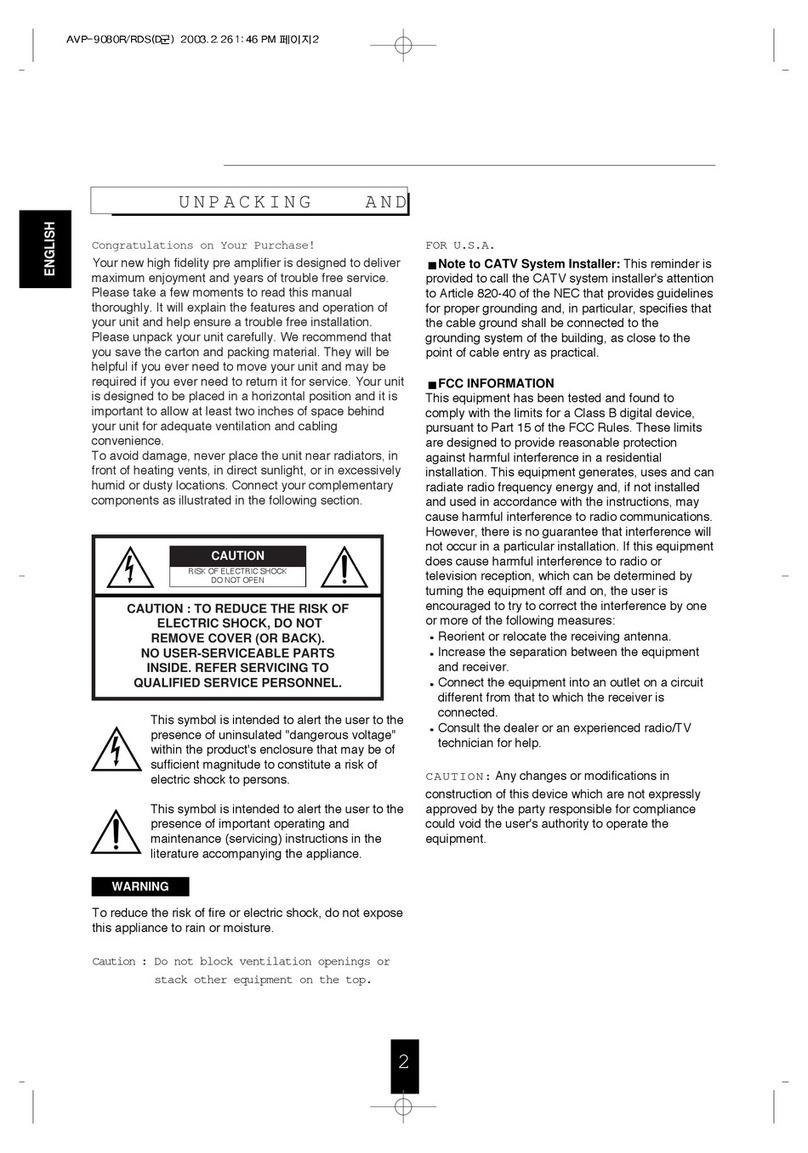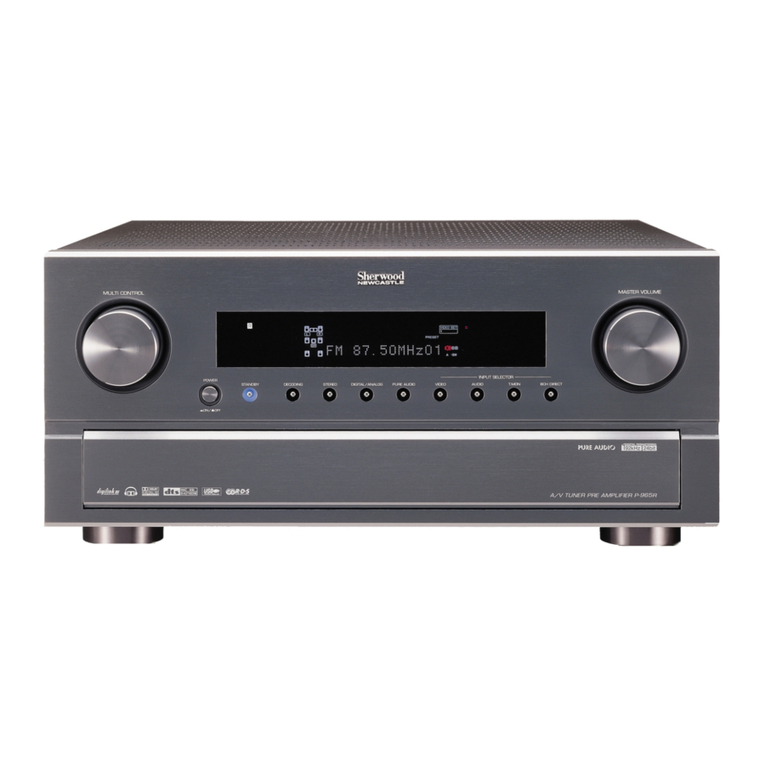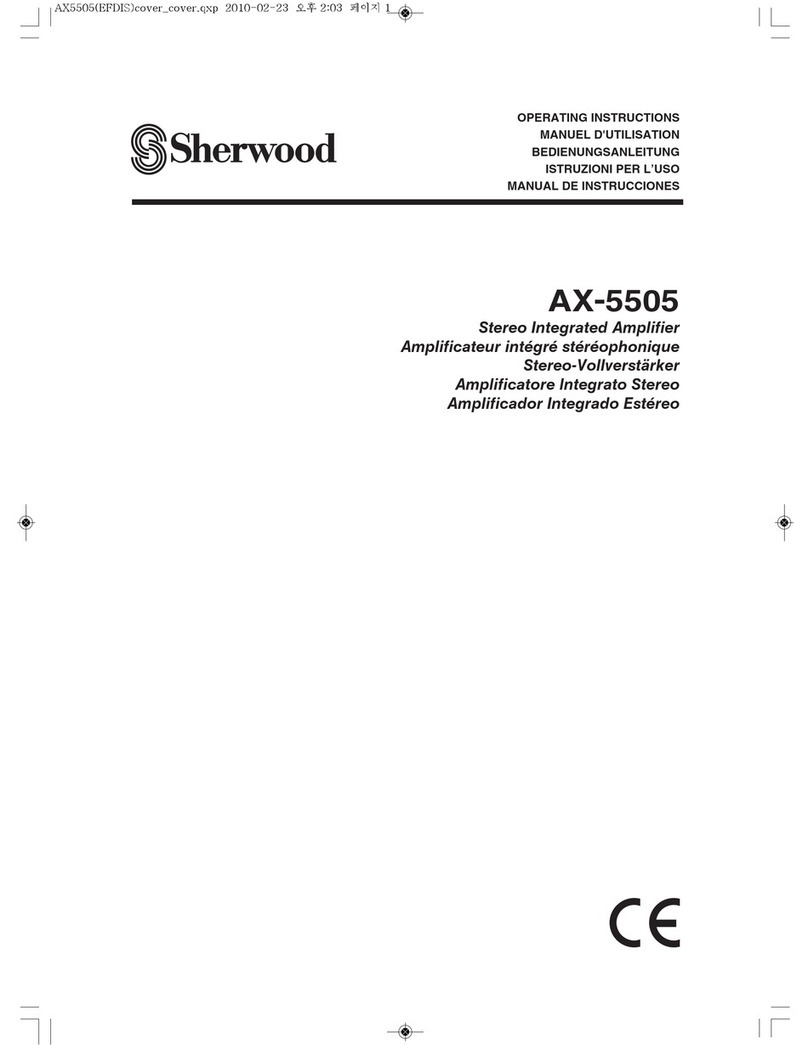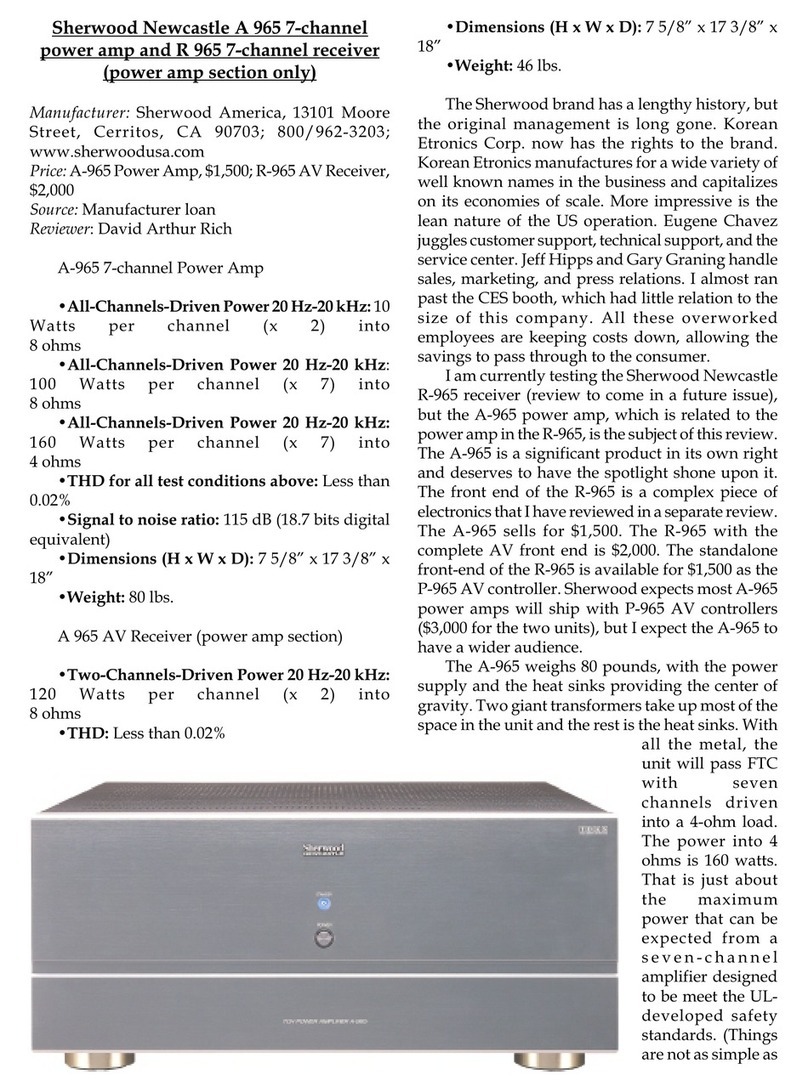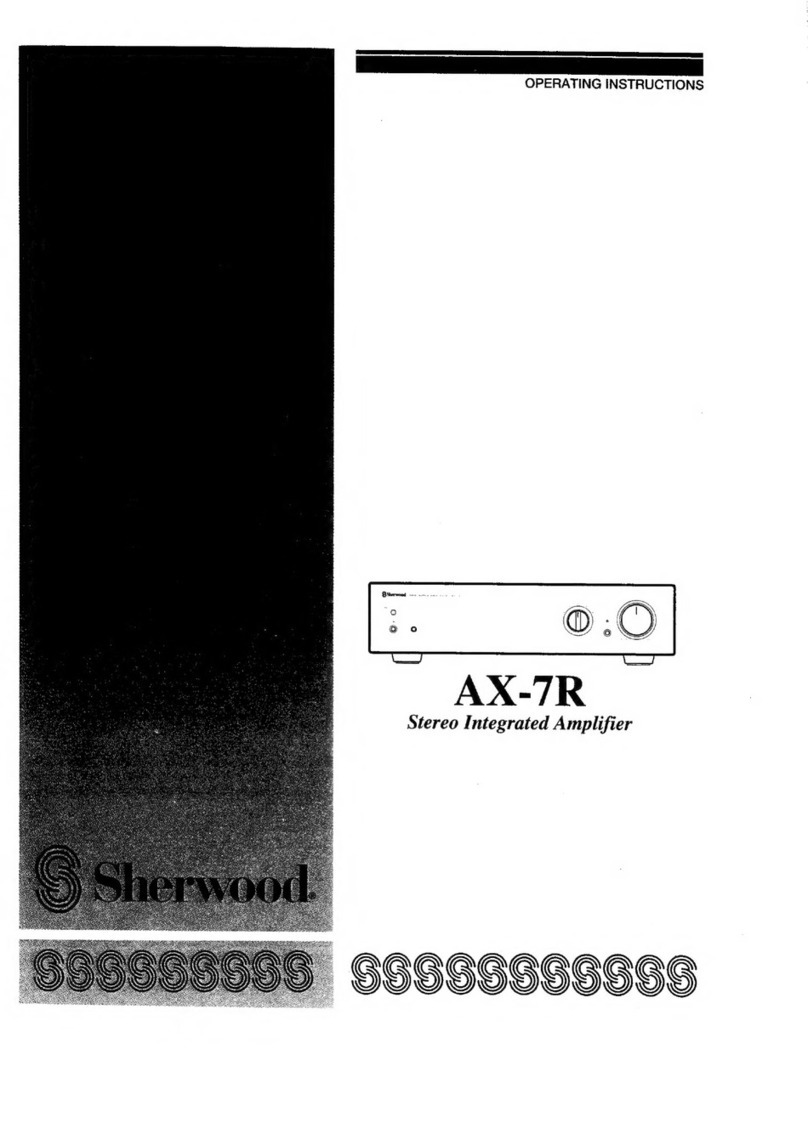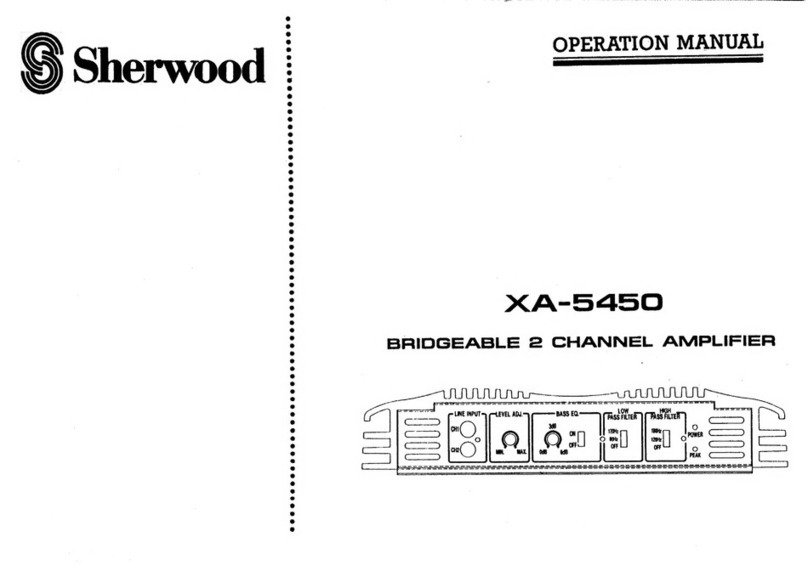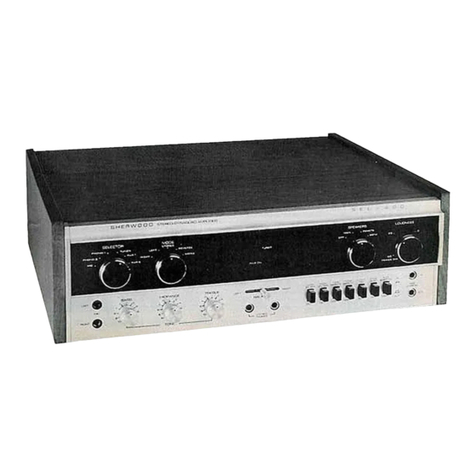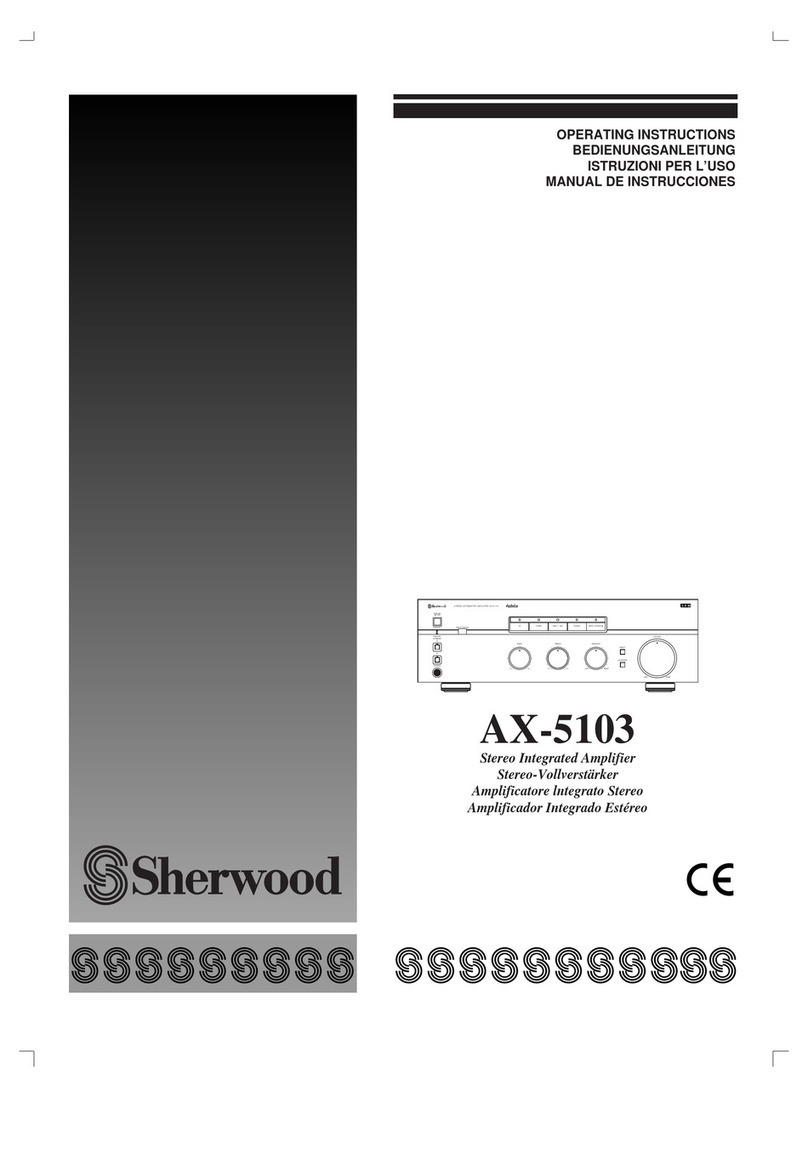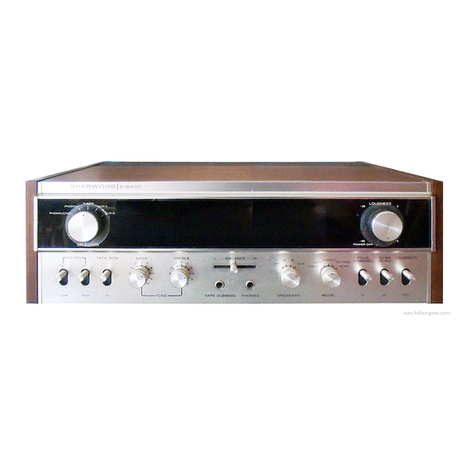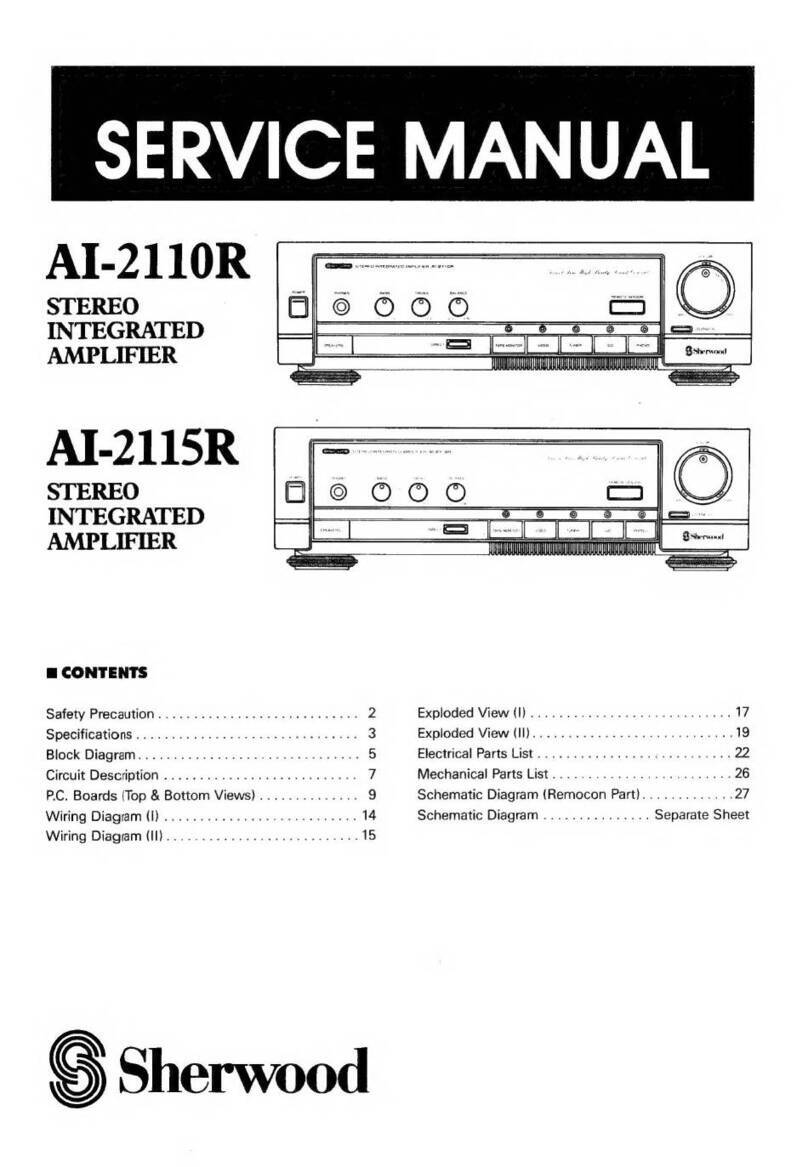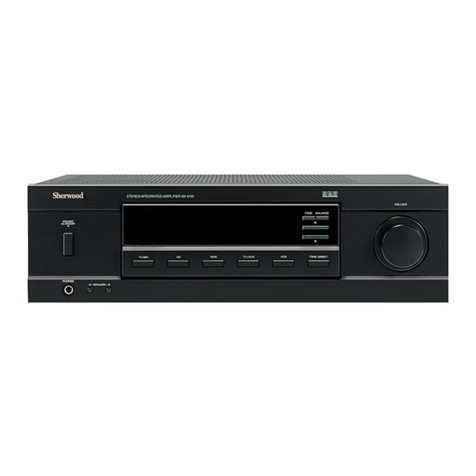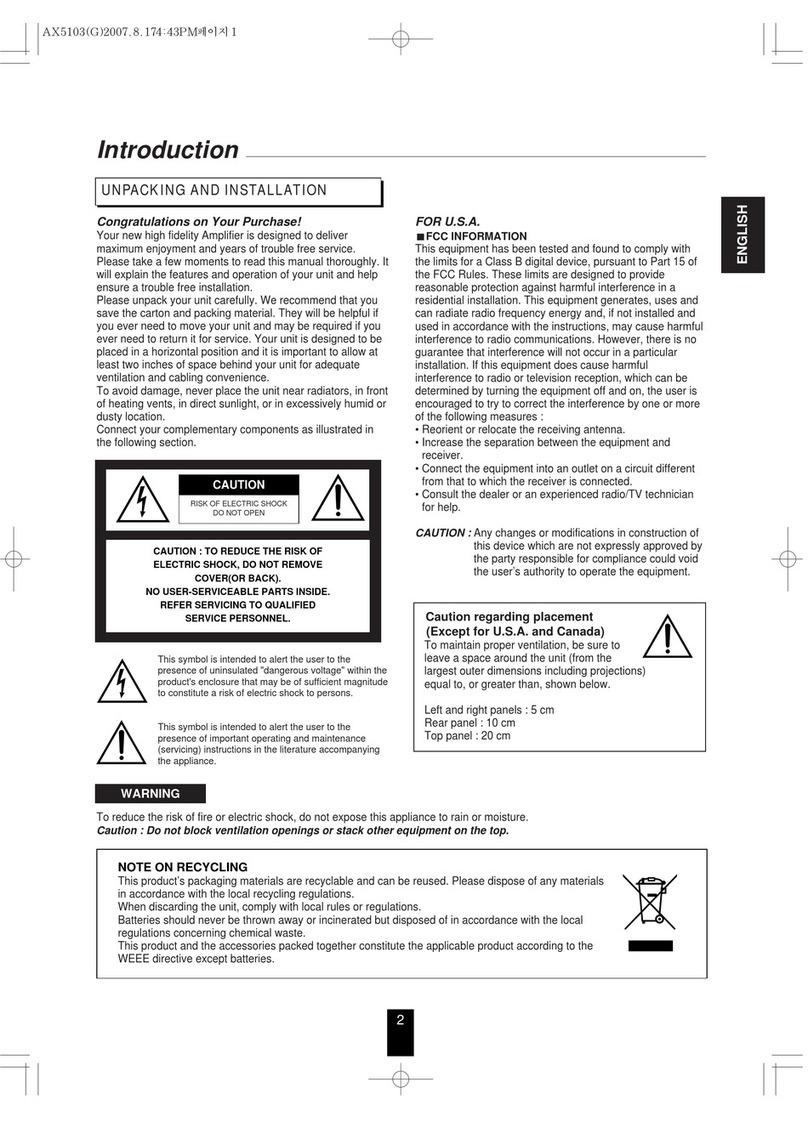5-9
500c
AMPLIFIER
SERVICINGAND
ADJUSTMENT
NOTE: To simplify the following descriptions only the left channel
and its related circuitries are deseribed. The right chan-
nel is identical except for reference symbol numbers. (
see
schQmatic diagrams )
Preliminary checks of the dc voltages present at various
points in the 5-9500c can indicate whether a transistor is
open, shorted, or functioning. FauLt isolation in the pre-
amplifier, tone amplifier, and driver stages can g
enerally
be isolated by checking the dc voltages or by comparing gain
measurements
of 1 KHz as indicated on the schematic or by
comparing the operating channeL with the defective channel.
FUSEAND
SPEAKER
5Y5TEM
CHECKS:
Your amplifier incorporates two speaker fuses, one for each
channel. If the fuse opens, check the speaker connections
for shorted wires ox a shorted speaker. (The speaker resist-
ance should not be less than 4 ohms.) If the speaker and
connections are not shorted replace the fuse with the Proper
val-ue as marked on the rear panel. If the speaker fuse still
opens your amplifier needs servicing.
lrr/hi1e
servicing the ampli.fier it will- be valuabl-e to opergte
the amplifier using a variable voltage power line (VnnIAC)
equipped with a line wattmeter to identify abnormal power
consumption. Increase the power line voltage upward while
observing the wattmeter. Power consumption shoul-d not ex-
ceed t
O-20 watts (
loudness control at volume minimum
) .= the
voltage is increased to the rated 1ZBVAC. If the power con-
sumption begins to exceed 2A watts, do NOT
increase the Power
line voltage any further and determine whether the malfunc-
tion is in the power supply, oI amPlifier section.
If the power amplifier is suspected, verify center-point
voltage on the dc side of the output el-ectrolyticr_C29O for
app=o*imately one-hal-f of the B+ supply voltage. If the cen-
ter-point voltage reads extremely ]ot r susPect a defective
output transistor on the l-ow
side (schematic shows transis-
tor as bottom device in each channel
)
. If center-point volt-
age reads extremely high r suspect a defective high side out-
put transistor.
If the output transistors are not at fau1t, then verify that
the output coupling electrolytic capacitor is not shortedt
other capacitors are not shorted, circuit board contains no
sol-der or etching shorts, open resistors r poor solder con-
nections or broken pads.
The following perfoxmance indicates a properly operating am-
plif ier with an I ohm
.resistive load.
v
\-1
